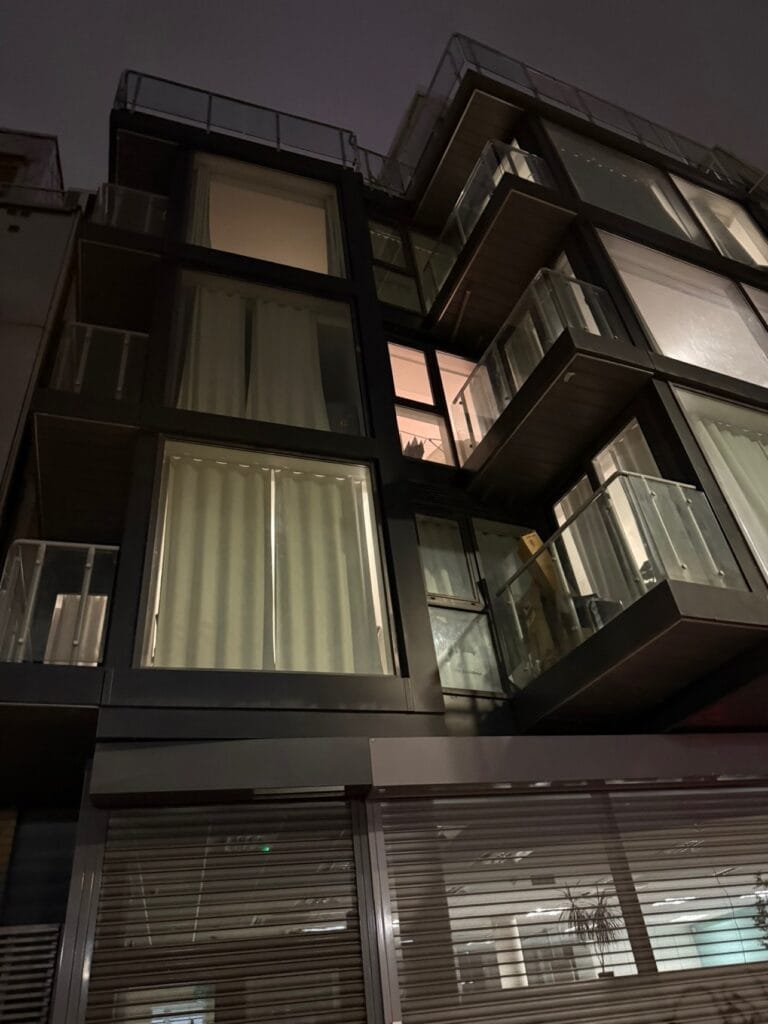Uncategorized
Installing Rockwool EN 120 FireStop: Overcoming Challenges for Optimal Fire Safety
Project Location : 31 Kentish Town, London NW1 8NL
In the world of building safety, ensuring that every component performs not only to expectations but also according to stringent safety standards is paramount. At the forefront of this initiative is the installation of fire stops, specifically Rockwool EN 120 FireStop systems, which are crucial in enhancing a building’s resilience against fire. This blog delves into the practical challenges and solutions associated with maintaining optimal installation standards, focusing on the crucial aspect of compression and the integration with aluminum paneling.
The Importance of Compression in FireStop Systems
The Rockwool EN 120 FireStop is a top-tier fire-resistant material favored for its ability to withstand high temperatures and prevent the spread of flames and smoke. One of the critical factors in its effectiveness is maintaining a specific compression set during installation. For the Rockwool system, ensuring a 10mm compression along the width of the fire stop is essential. This compression is crucial because it ensures that the material expands properly under heat, filling gaps and preventing the passage of smoke and flames.
Smoke is often the first indicator and carrier of fire within a building. By preventing smoke from passing through, we significantly hinder the fire’s ability to spread, buying crucial time for evacuation and response. Thus, “no smoke, no fire” becomes a guiding principle in our installation process.
Challenges of Maintaining Compression
Maintaining the requisite 10mm compression presents a set of unique challenges, especially when integrating the FireStop with other building elements like aluminum panels. The main difficulty lies in ensuring that this compression is consistent and effective, despite the natural variations and movements within a building’s structure.
During the installation at a recent project, our team faced the challenge of aligning the Rockwool EN 120 FireStop with the sleek aluminum cladding that was to envelope the building’s exterior. The aluminum panels not only needed to align aesthetically but also functionally with the FireStop to ensure that the integrity of the fire safety mechanism was not compromised.
Techniques and Solutions
1. Detailed Planning and Measurements : Before any installation commenced, detailed plans and measurements were taken to map out the exact positioning and alignment needed to maintain the 10mm compression. This involved sophisticated modeling tools and collaboration between engineers and installation technicians.
2. Custom Fixtures and Brackets : To keep the FireStop material compressed and in place while allowing for the installation of aluminum panels, custom fixtures and brackets were designed. These components were crucial in holding the FireStop securely, preventing any shifts that could reduce its effectiveness.
3. Replicating Lab Conditions : Perhaps the most significant approach was replicating the conditions under which the FireStop was tested. This involved close consultation with the testing laboratories that certified the Rockwool EN 120 FireStop. By understanding the exact conditions under which the material performed in testing scenarios, we could mimic those in the actual installation, ensuring that the product would perform to its tested potential.
4. Continuous Monitoring and Adjustment : Throughout the installation process, the compression was continuously monitored and adjusted as needed. This dynamic approach allowed for real-time corrections and ensured that the ideal compression was maintained throughout the lifecycle of the installation.
5. Training and Expertise : Ensuring that all personnel involved were thoroughly trained in the specific requirements and techniques for installing the Rockwool EN 120 FireStop was another critical element. This training ensured that every team member understood the importance of compression and the techniques to maintain it.
Conclusion
The installation of Rockwool EN 120 FireStop is not just about placing a barrier; it’s about ensuring that every detail of its implementation maximizes its fire-resistant properties. The challenges of maintaining the necessary 10mm compression during installation are significant, but with the right planning, tools, and expertise, they can be effectively overcome. This not only ensures compliance with safety standards but also significantly enhances the building’s overall fire safety, protecting property and lives.
At our company, embracing such challenges and turning them into successes is part of our commitment to leading the industry in fire safety solutions, providing peace of mind to builders, occupants, and the wider community alike. Through meticulous attention to detail and an unwavering focus on quality and safety, we continue to build safer, more resilient structures for the future.
Are you planning a sustainable construction project?
Contact AMTA ARGC today to discuss your how our fire-rated cladding solutions can support your sustainability objectives while ensuring safety and compliance!


